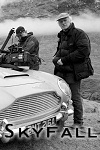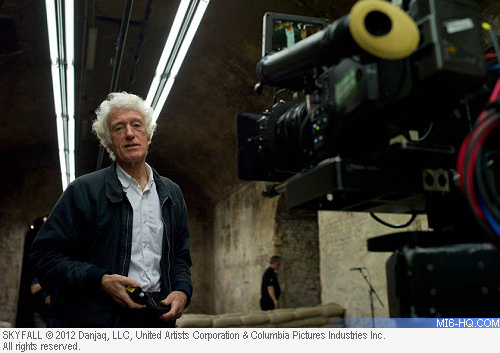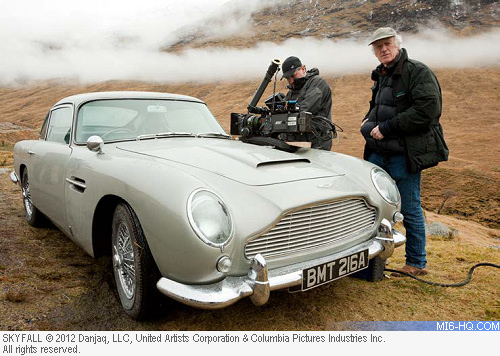 |
| |
'Skyfall' cinematographer Roger Deakins talked to
an industry magazine about his use of digital cameras
for the first time on a James Bond film... |
|
Roger Deakins Interview
24th September 2012
Cinematographer Roger Deakins, ASC, BSC reunited with Director
Sam Mendes for Skyfall, the 25th James Bond film. Their previous
collaborations, Jarhead (2005) and Revolutionary Road (2008),
had both been photographed on 35mm film. Deakins had
used ARRI
Alexas on In Time. This time, on Skyfall, he used two
new
ARRI Alexa Studio prototypes as his main cameras. Roger Deakins
explains camera choice and how he used them on this major production
in a free issue of Film & Digital
Times.

Above: Roger Deakins on location
in the underground
MI6 shooting range on Skyfall.
|
What can you tell us about the look you created for the film?
I can say that it’s got a lot of variety, from very hot,
bright, day exteriors to very dark, underground, cavernous areas
lit with little practicals we made up. There’s a huge variety,
even more than you’d find in a typical Bond film, I think.

Above: Andy Harris (Camera Assistant)
and Roger Deakins (Cinematographer) on location
in Glencoe, Scotland.
|
We heard rumors of a 19-camera shot...
We did some big stuff. A lot of times, we’d just shoot
two cameras or even one. Often we’d shoot handheld, and
I would do the main camera, and my friend Pete Cavaciuti (B Camera
Operator/Steadicam
Operator) would do the second camera, and we’d maybe have
another camera somewhere. But for just about all the drama and
the dialog, we probably shot with one camera. We’d
shoot a lot of the action handheld, or on all sorts of different
equipment depending on the shot.
There was one big stunt where a big set had been built and we
had one
go at it. I think we set 11 cameras, all Alexas. It was a one-off,
and it went fantastically well. They used every camera angle,
and the action that takes place within it is extended, because
every
camera actually worked really well. That was quite successful.

Above: Skyfall Scottish moor
scene with ARRI Alexa suspended on cables.
|
You’ve been quoted as saying that
the monitor facilitates communication with the director and
can result in the ability
to take the image a bit further than you otherwise might.
I think
that was really
true on this Bond film, too. Sometimes Sam would
be watching another monitor, and he would make a comment.
I’d
take him over to Josh’s station and say. “Well
that’s it, basically, that is what the camera is seeing,
and I can change it here or in post.” I think that was
very advantageous, and also I think it was nice for Sam—I
think he enjoyed working that way, where he could see exactly
what the camera was seeing.
Obviously,
Sam is very much an actor’s director, and he likes the
ability to run the camera longer than a magazine length. It’s
a real advantage, as is not having to wait for the dailies and
the lab. The whole
process of going through to the edit suite was much smoother,
really.
Click
here to read the complete interview in Film & Digital Times (PDF Download)